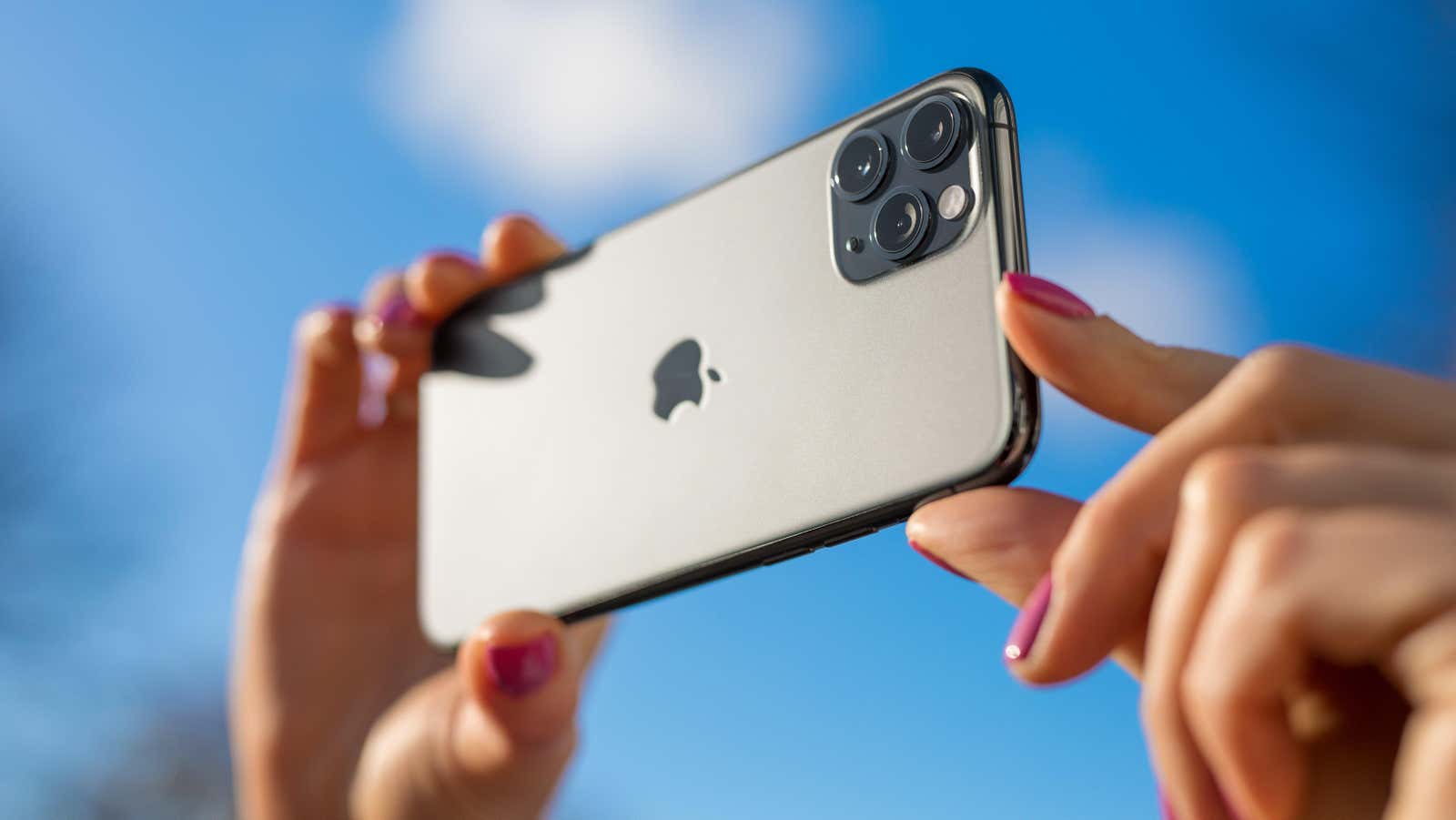Why Enlarged Photos Look Bad on Your IPhone (and How to Fix It)

When you want to get closer to an object without moving, you magnify it. It’s a camera feature that’s been around for decades, and it’s alive and well on the iPhone. However, you may have noticed that your zoom shots are not as clear as your normal shots. In fact, they sometimes look like garbage. There is a reason for this.
You are not actually zooming the iPhone camera
Let’s start with this: your iPhone can’t scale. The camera lenses on your iPhone cannot move and are fixed at the focal length they are designed for. If you have an iPhone with multiple cameras, you can zoom in by switching to a longer focal length lens. For example, on the iPhone 13 Pro, you have a 13mm ultra-wide lens, a 26mm wide-angle lens (the default lens), and a 77mm telephoto lens.
The Camera app treats the wide-angle lens as a “1x” zoom option; when you switch to the ultra-wide lens you’ll see “0.5x” and the telephoto is “3x” zoom. These figures differ depending on the iPhone in question: for example, the first dual-camera iPhones went from 1x to 2x, while the iPhone 12 Pro brought us 2.5x.
Not all iPhones even have a telephoto lens. If your iPhone isn’t on this list, it doesn’t have one:
- iPhone 7/7 Plus (2x zoom)
- iPhone 8/8 Plus (2x zoom)
- iPhone X (2x zoom)
- iPhone XS/XS Max (2x zoom)
- iPhone 11 Pro/11 Pro Max (2x zoom)
- iPhone 12 Pro/12 Pro Max (2.5x zoom)
- iPhone 13 Pro/13 Pro Max (3x zoom)
Optical zoom vs digital zoom on iPhone
Of course, you probably know that you are not limited to 0.5x, 1x, and 3x. You can easily move between these numbers by choosing magnifications of 0.6x, 1.7x, and in some cases up to 12x. For these zoom levels, iOS uses digital zoom, which essentially crops the image to get that zoom. The 0.6x “zoom” is really a slightly cropped image from an ultra wide-angle lens; 1.7x wide-angle cropped image; and 12x is a very cropped image from both the telephoto and wide angle cameras.
Digital zoom can be useful, but not for the best image quality. You lose detail by cropping the photo artificially, as you can see for yourself by manually cropping the image and enlarging it back to its original size. Your iPhone will do some computational work to make the image look better than a manual crop, but it still doesn’t compare to the quality you get from an uncropped shot with your lens.
By the way, if your iPhone doesn’t have a telephoto lens, it’s only capable of digital zooms above 1x.
Apple lies to you about your iPhone’s telephoto lens
So, when you really want to zoom in, you can switch to a telephoto lens for a 3x zoom. Problem solved, right? No, not at all. You see, Apple is playing a trick with the cameras here that is not advertised to the user. Your iPhone will only use the telephoto lens if it thinks the scene justifies its use. For example, if the lighting isn’t bright enough, iOS will rely on the wide-angle lens even if you ask for a telephoto lens. Instead of using a lens that actually “enlarges” the image, your iPhone uses a terrible digital zoom, all without your knowledge.
So, when you think you’re using your iPhone’s telephoto lens – a lens that, mind you, is only included with the more expensive “Pro” iPhones – you get the same shot you’d expect with a digital zoom using wide. There’s an easy way to check if this happens while shooting: hold your finger over the telephoto lens (the top lens in a three-camera array), then select it from the zoom options in the Camera app. If your iPhone uses a lens, your finger will obviously block it. If not, you will see your camera “zoom in” and no obstacles are detected.
How to force your iPhone to use the telephoto lens every time
Luckily, there are ways to force your iPhone to use the telephoto lens. One way is to shoot in Portrait mode instead of Photo mode. I didn’t know about this trick until this Reddit thread from user MyManD . For zoomed-in shots in portrait mode (default on iPhone Pro), your iPhone uses the telephoto lens instead of digital zoom. If you don’t want to use portrait mode for that particular shot, it’s easy to turn off the effect after the fact. Find the photo in Photos, tap Edit, then tap the yellow PORTRAIT label at the top to turn blur off.
However, you don’t have to deal with portrait mode if you’re willing to spend some money. Third party camera apps like Halide will let you choose the lens to shoot without worrying about the app bypassing your choice. These apps are also full of features like RAW support on most iPhones and finely tuned exposure and ISO controls, so consider picking one of these if the iPhone’s Camera app doesn’t do it for you anyway.
Interestingly, there is a way to force your iPhone to use the telephoto lens when shooting video: shoot video in 4K resolution, 60 frames per second. For some reason, your iPhone always uses the telephoto lens to zoom in when recording in 4K/60, but not when using other frame rates. However, if you want to force the use of the telephoto lens while recording at a different frame rate, consider using a third-party video recording application like FiLMiC Pro .
An expensive but effective option can be lens adapters for your iPhone. Companies like Moment make telephoto lenses for mobile devices that you can mount on your iPhone with a compatible case and lens adapter. It’s an expensive setup, but it will give any iPhone, Pro or not, an optical zoom to play with.